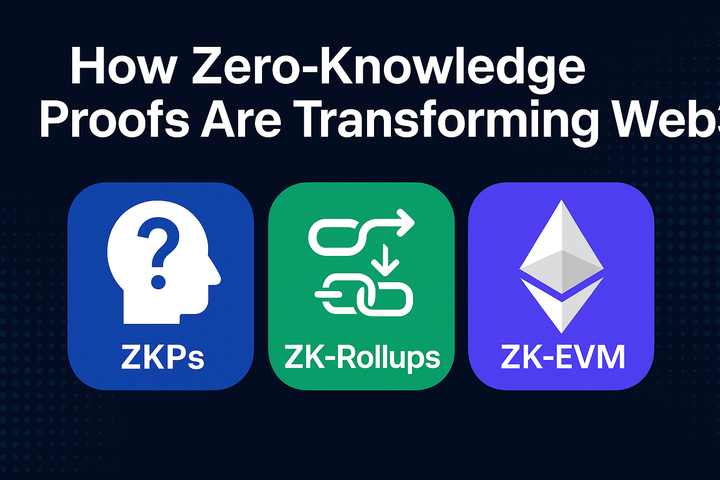Magic Newton: Projects Enabling AI-Driven Transactions Through Prompts

AI-Powered Blockchain Transactions
Magic Newton is a platform developed by Magic Labs that provides AI-powered agents for automating cryptocurrency tasks and portfolio management. At its core, it allows users to delegate on-chain actions using natural language prompts, much like telling ChatGPT to handle your crypto. This tackles a major user-experience problem in DeFi – the complexity of interacting with multiple protocols, private keys, and chains. With Magic Newton, users can simply ask an AI agent to perform tasks such as swapping tokens, executing trades, or moving funds across chains, and the agent will carry out the instructions securely and transparently. In other words, Magic Newton is a “crypto co-pilot” that lets you put your DeFi strategies on autopilot.
Behind the scenes, Magic Newton’s system is built on a purpose-specific rollup called the Newton Protocol, which provides verifiability and security for the AI’s actions. This means every automated transaction the agent performs is cryptographically guaranteed to stay within user-approved parameters. Unlike risky trading bots that require full control of your wallet, Magic Newton’s agents operate within strict guardrails you set. They use session keys and permissions (akin to OAuth for blockchain) so the agent can act on your behalf only in allowed ways. Meanwhile, each action runs inside a Trusted Execution Environment (TEE) on dedicated off-chain infrastructure, and produces a zero-knowledge proof attesting that the agent did exactly what it was supposed to. This combination of AI + verifiable computing creates a trust layer so you don’t have to simply trust the AI – you can verify its every move.
Modular Agent Infrastructure
Magic Newton’s architecture is modular by design. It separates the roles of the on-chain components and off-chain AI agents to maximize security and flexibility. The system involves multiple types of agents and validators working together:
- User Smart Wallet – Your wallet (e.g. an ERC-4337 smart account) posts instructions or “jobs” for the agent, including what task to perform and under what constraints (e.g. swap X for Y weekly, up to a certain price).
- Executor Agents – Off-chain AI agents that pick up the job, interpret the natural language prompt, and perform the on-chain steps required. They run in isolated TEEs (such as Intel TDX enclaves) to ensure secure computation. The executor will, for example, call a DEX contract or bridge based on the prompt.
- Validator Agents – Another set of off-chain agents or on-chain smart contracts that verify the executor’s work. They check the zero-knowledge proof generated by the executor to confirm the transaction followed the rules. If the proof is valid, the transaction is confirmed on-chain; if not, the executor could be slashed (penalized).
- Newton Protocol Rollup – This acts as an orchestrator layer connecting the agents and the main blockchain networks. It’s an aggregated validity rollup that sequences the transactions, enforces proofs, and anchors the results to the base chains (like Ethereum, Optimism, etc.). Essentially, it’s the backbone that makes Magic Newton’s cross-chain automation trustless.
This modular approach means Magic Newton is chain-agnostic and application-agnostic. Whether the user’s request involves Ethereum DeFi, an Optimism DEX, or any chain, the AI agent can interact across them through the rollup. Magic Newton abstracts away the different chains and dApps – the user just specifies the intent (“provide liquidity in Pool X and stake the LP token”) and the agent figures out the rest. The execution is broken into modules: prompt processing, transaction execution, and verification, each handled by separate components for robustness. This is analogous to a modular blockchain design, but here applied to AI agents where trust is distributed among the agent, the TEE, and the rollup validators.
Integration with Mitosis Ecosystem
Magic Newton’s capabilities align closely with the modular blockchain vision championed by projects like Mitosis. Mitosis is a network for programmable liquidity – enabling cross-chain DeFi actions in a seamless way. Integrating Magic Newton with Mitosis could supercharge both:
- Cross-Chain Liquidity Automation: Mitosis provides expeditions and vaults that span multiple chains and assets. Magic Newton agents could automatically manage liquidity in these vaults – for example, moving liquidity from one chain to another for yield optimization, or balancing a vault’s asset ratios. Since Mitosis supports cross-chain deposits and withdrawals (e.g. deposit on Scroll, withdraw on Linea), an AI agent could orchestrate that for a user based on simple instructions (“maximize my yield across all Mitosis vaults”).
- User-Friendly DeFi: Both Mitosis and Magic Newton aim to simplify DeFi participation. Mitosis’s Ecosystem-Owned Liquidity model and Magic Newton’s AI agents could be combined to create an experience where a user just expresses a goal (“earn passive income on $5,000 with low risk”) and behind the scenes the agent allocates that into Mitosis liquidity pools, staking, etc. The agent would handle bridging to the Mitosis chain, providing liquidity, and compounding rewards, all verified by Mitosis’s infrastructure.
- Modularity and Security: Mitosis is built with modular security (using Hyperlane, etc.) and focus on interoperability. Magic Newton’s rollup could potentially plug into Mitosis as another execution layer. Mitosis could even run Magic Newton’s Newton Protocol as a specialized rollup within its ecosystem. This would give Mitosis users access to verifiable AI-driven transactions while benefiting from Mitosis’s cross-chain liquidity and security model. Essentially, Magic Newton could become an “intelligent automation layer” on top of Mitosis, broadening what users can do in one place.
While direct integration is in early stages, the synergy is clear: Mitosis provides the multi-chain playground and liquidity primitives, and Magic Newton provides the AI brain to navigate and utilize those primitives. As DeFi moves toward greater composability, we may see Magic Newton agents participating in Mitosis expeditions or Mitosis including Magic Newton as part of its user interface for strategy automation. The combination could unlock complex strategies (like providing liquidity on one chain, borrowing on another, farming yields on a third) all coordinated by AI – a powerful showcase of modular DeFi.
Real-World Applications of Magic Newton
Magic Newton’s approach isn’t just theoretical – it’s designed to handle everyday crypto financial needs in a safer, automated way. Some real-world applications include:
- Automated Dollar-Cost Averaging (DCA): A user can instruct, “Buy $100 of BTC every Monday”, and the agent will execute those trades weekly on a DEX or CeFi platform, at market or with certain conditions. It will ensure each buy is properly executed and produce proofs for each, so the user can verify the schedule was followed correctly.
- Yield Optimization: Rather than manually moving funds between yield farms, a Magic Newton agent can continuously hunt for the best yield. For example, “Optimize my yield on 1000 USDC” might lead the agent to deposit into a lending protocol, and if rates drop, shift to a liquidity pool elsewhere. All this occurs while respecting permissions (it can’t, say, move funds to an unauthorized protocol) and ensuring no private keys are compromised.
- Portfolio Rebalancing: The agent can monitor a portfolio and rebalance assets to maintain target allocations. If a user wants a 50/30/20 split between three coins, the agent can periodically sell and buy to keep those ratios, again doing so transparently and at optimal times. It could even use multiple exchanges or bridges to find liquidity.
- Copy Trading and Strategies: Users could subscribe to strategies or “copy” the moves of successful traders via an agent. For instance, the agent could follow predefined strategies like trend-following or arbitrage across exchanges, executing far faster than a human could. Since everything is verifiable, users gain confidence that the agent isn’t deviating or making mistakes.
- Autonomous Commerce and Payments: Magic Newton can handle on-chain payments like a “set-and-forget” service. Examples: “Pay 0.01 ETH to my friend monthly” – the agent will do scheduled payments. Or “If my wallet balance falls below X, swap some stablecoin to refill it”. This resembles having a personal crypto treasurer watching your accounts 24/7.
- DAO and Governance Participation: An agent could even automate participation in DAO votes or governance. A user might say, “Vote in all governance proposals of Protocol X according to recommendations from Y”, and the agent will execute the votes as instructed, proving that it followed the chosen policy.
Importantly, all these are done without the user handing over their keys or blindly trusting a black-box AI. Magic Newton’s design ensures that users maintain control – they can always revoke the agent’s permissions – and they gain accountability through the verifiable log (like a “black box” for all actions). It’s a balance of convenience and security that hasn’t existed in crypto until now.
A New Era of Autonomous DeFi
Magic Newton represents a convergence of AI and blockchain that could usher in a new era of autonomous finance. By using natural language, it lowers the barrier for newcomers to engage with complex DeFi strategies. By using a modular, provable infrastructure, it addresses the trust and security concerns that normally come with automation. In a slightly philosophical sense, Magic Newton embodies the idea of “programmable finance” – where you program what you want in human terms, and the system interprets and acts in the crypto realm to achieve it.
As Magic Newton integrates with ecosystems like Mitosis and beyond, we might see a future where managing a crypto portfolio is as easy as chatting with an assistant. The user remains in charge, setting goals and limits, while the AI agents handle the busywork of trading, staking, and bridging. This frees individuals to focus on strategy and innovation rather than constant manual monitoring.
Magic Newton is still early – it launched its first protocols in mid-2025 – but it has momentum, with backing from major players (even PayPal Ventures). Its real-world applications, from automated investing to cross-chain asset management, showcase the practical value of merging AI with blockchain. If successful, Magic Newton could become a standard tool in every crypto user’s arsenal, much like how autopilot is standard in modern planes. It’s an exciting example of how modular design and AI can work together to change the narrative of DeFi from DIY complexity to guided, intelligent automation.



Comments ()